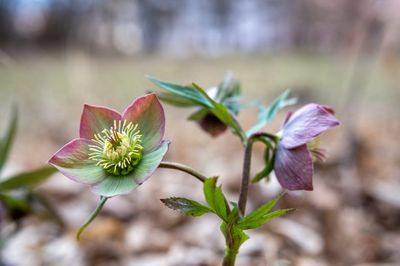Hellebore in the Garden
Although hellebore in the garden is beautiful, it can present a danger to pets. The plant is also harmful to cattle, horses, and other livestock but generally only when they are desperate and starving because sufficient feed is unavailable. If you aren’t sure about the existence of hellebore in the garden, or if you have any plants you are unsure of, show a picture to knowledgeable folks at a greenhouse or nursery. You can also ask experts at your local cooperative extension to identify unknown plants.
Dogs and Hellebore Toxicity
Generally, dogs won’t ingest a lot of hellebore because of the bitter, unpleasant taste (and some types also have a nasty odor). As a result, reactions tend to be fairly mild and severe toxicity is unusual. In most cases, a nasty taste and itching or burning of the mouth is the worst that will happen. It’s a very good idea, however, to call your veterinarian. He or she may direct you to induce vomiting or may tell you how to rinse your dog’s mouth in the case of pain and swelling. However, if you’re unsure how much of the plant your dog ingested, don’t wait. Take your pet to a veterinarian as soon as possible.
Symptoms of Hellebore Poisoning in Dogs
Typical signs of hellebore toxicity include:
Abdominal pain, vomiting, and diarrhea Drooling Colic Depression and lethargy Pawing at mouth Excessive thirst
Dogs that ingest a large amount of hellebore may experience:
Difficulty breathing Paralysis Low blood pressure Weakness Seizures Heart rhythm abnormalities Sudden death
It’s always a good idea to research beforehand about the plants in your home and garden to weed out those that can potentially harm your pets and especially small children.
